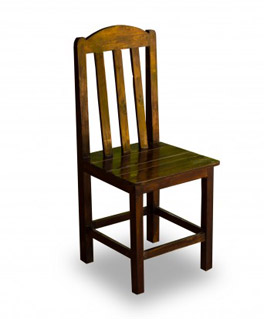MONTHLY BLOG 42, CHAIRING SEMINARS AND LECTURES
If citing, please kindly acknowledge copyright © Penelope J. Corfield (2014)
The aim is to get everyone involved in a really good discussion, aiding the speaker and the seminar/lecture participants alike. By ‘good’, I mean critical but supportive. Any criticisms, of course, should be directed at the paper, not at the speaker: as in football, kicking the ball, not the person.
Okay, that sounds pretty easy. How best to promote the desired result? At the start, it’s essential to open the proceedings in an open and genial manner, with a joke, or failing that, at least a humorous tone. Nothing like a murmur of laughter to weld a group together. Then the speaker should be introduced pithily, without notes. None of these lengthy recitations of everything that he or she has ever done, which makes everyone drowsy. And certainly no advance-guessing by the chair of the points that the speaker ought to make – thus stealing (or bodging) the thunder before the show has begun.
By the way, from the start the chair should make a point of visibly and fairly slowly looking all round the room, bringing everyone within an encompassing gaze. And do this more than once. I call it giving the lighthouse beam.

During the paper or lecture, whether good or bad, the chair has to look alert and listen. It encourages the speaker and the audience; and it’s necessary, as from time to time the speaker refers to the chair (perhaps to ask how much time is left). Actually, that’s why I like chairing, as it keeps one wide-awake. Ideally, speakers should have been briefed before the meeting about the length of talk required. But chair should always confirm that at the start; and then gently halt speakers who go on for too long. On a formal occasion, a printed card saying TIME! can be passed to the speaker but, informally, a hand signal usually suffices. There’s always some leeway on these things. If the speaker is part of a panel, then strict timekeeping is essential. In other circumstances, it’s the chair’s judgement call. But don’t allow too much over-running, as the audience gets at first restive and then somnolent.
While the speaker is talking, I usually make a mental list of the key questions raised by the paper. A good seminar or lecture audience will usually spot them all; but it’s a useful backup. Immediately after the paper, it’s absolutely essential for the chair to make some suitable response while people gather their thoughts. It’s always bad news when the chair just says abruptly: ‘Any questions?’ And even worse when there’s a great silence and the chair adds dolefully: ‘Well, I can see it’s going to be a difficult session’. Lead balloons all round.
Instead, the chair should briefly thank the speaker (nothing over the top) and note the range of issues raised by the paper (that’s helpful for beginners). Followed by an ‘opening’ question, to get the discussion going. Not too detailed or heavy; but not a patsy either.
While the speaker answers, the chair should look intently round the room to encourage people to signal that they have questions. This is the really crucial bit. If at all possible, the chair should sit up, or semi-stand, leaning against a chair or table, to free the sightlines. Then the lighthouse beam can skim lightly over everyone there. Preferably with a smile. People usually give very imperceptible signals – a nod or lift of the hand. It’s rather like the sly nods and winks at an auction, though fortunately not quite as covert.
Usually, the questions are taken in the order that they come. But, if there’s a long list of respondents, then it’s helpful to call people from different parts of the room. That draws everyone into the discussion.
Very rarely indeed, there are rude or out-of-order questions. The chair should then intervene, extracting the element within the question that can be answered and telling the speaker to ignore the rest. Or, if the question is completely out of order, the chair should simply say so. That is more likely to happen in political meetings than in academic gatherings. And even then, it’s rare. Other problems sometimes occur with poorly phrased or incomprehensible questions. The speaker is entitled to look to the chair for help, so be ready to paraphrase the question into something answerable.
Discreetly, the chair is conducting the discussion; and should have a range of questions up his/her sleeve to throw into the pool, if the questioning flags. Difficult depth-charges1 can be used especially against the good and the great, who shouldn’t be let off too easily.
Beginners, however, should not be given too hard a time – enough to test them but not to destroy. It’s good to intervene with some supportive words, if they are seriously floundering, though the debate must be allowed to flow.
In terms of manner, the chair should be genial; but not too ‘in’. It’s best to avoid calling people to speak by their first names or, even worse, by unfamiliar nicknames. Such references make the group seem too cliquey and seriously deter newcomers. When calling people, I refer to them by location: ‘A question at the back’ and ‘Now a question from this side of the room’ and so forth. Not the sartorial references favoured by TV chat-show hosts: ‘the person in the blue jumper’; ‘the woman with glasses’, which are too impersonal.
It should go without saying, in free-flowing academic events, that speakers should not be called in order of academic seniority. The old-style seminars, when the professors speak before everyone else, in rank order, can still be found and even appreciated as a rarity. But that’s what they should remain.
Lastly, the question of tone. The chair must be friendly but not over fulsome. That just sounds sycophantic. At the same time, the chair must be critical but not too sardonic. As an auto-critic, I wince at memories of the times when I’ve tried to be sharp but just come over as waspish. The sardonic remark that isn’t funny really isn’t funny. Luckily these moments (only few, I hope) get lost in the flow. It’s the paper or lecture that gets remembered. Where is the next academic gathering to chair? I’m ready with my lighthouse beam.
 1 See PJC BLOG no 27, February 2013: ‘Asking Questions’.
1 See PJC BLOG no 27, February 2013: ‘Asking Questions’.
For further discussion, see Twitter
To read other discussion-points, please click here
To download Monthly Blog 42 please click here
